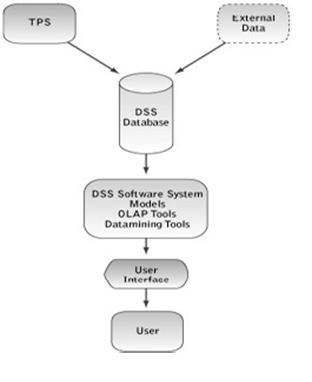It is pertinent to realize the importance of growth of MIS in stages in order to encounter increasing complexity of business processes and changing scenario of management. MIS development evolves from EDP systems. The EDP systems have rudimentary technology to handle clerical and supervisory operations in an organisation. This is initiation stage. The advantages of computerization are gradually realized by most of the people in an organisation. This realization leads to proliferation of computer, networking technologies and computer based system applications within an organisation. This is contagious stage. Next stage is typified by planning and control. As demand for computerization increases, a need is realized for cost-benefit analysis. This is imperative to plan for future MIS in a cost effective manner. Next stage of MIS development is integration of subsystems. This comes with realization of interdependence of inflow of data from various sources for valid information. Management plans to leverageContinue reading
Business Information Systems
Human Resource Development Systems
Ever since the organisations had been involved in some activity, the human being working there as employees are continued to be considered as valued assets. This is the reason for relevance of human resource management just like any other resource management. Organisational effectiveness and efficiency, growth of business, sustenance of competitive advantage can be attributed to the development of an appropriate corporate culture within an organisation by integrating business and human resource strategies. HRD management emphasizes on optimum utilization of human resources by formulating consistent and coherent policies aimed at promoting commitment to the organisation. This commitment of employees yield optimum level of efficiency from them and unleash a wave of creativity in the midst of the working environment which is less compliant and most confident of the human resource. Traditionally, information systems for HRD had been restricted to personnel management systems whose purview include recruitment,Continue reading
Decision Support Systems (DSS)
Decision Support Systems (DSS) help executives make better decisions by using historical and current data from internal Information Systems and external sources. By combining massive amounts of data with sophisticated analytical models and tools, and by making the system easy to use, they provide a much better source of information to use in the decision-making process. Decision Support Systems (DSS) are a class of computerized information systems that support decision-making activities. DSS are interactive computer-based systems and subsystems intended to help decision makers use communications technologies, data, documents, knowledge and/or models to successfully complete decision process tasks. While many people think of decision support systems as a specialized part of a business, most companies have actually integrated this system into their day to day operating activities. For instance, many companies constantly download and analyze sales data, budget sheets and forecasts and they update their strategy once they analyze and evaluateContinue reading
Case Study on E-Business Transformation: Cisco Systems
Cisco Systems is the network vendor for many institutions — yet they now also provide products and services for home networking. At the beginning history of Cisco Systems, the corporation’s goals were to build-up easiness in accessing the information using various electronic information channels, especially computer, inside the Stanford campus. Along with the growth of the firm, the management hired many talented employees. They formalized their business plan covering four strategic goals (provide complete solution for businesses, make acquisitions a structured process, define the industry-wide networking protocols, and form the right strategic alliances). Based on that strategy, they want to become “e-business” leaders in their industry. Cisco use several distribution channels to deliver its products and services such as personal selling, third-party distributors, resellers, service providers, and system integrators. Since Cisco plays in the networking products, they try to provide customers with a great possible flexibility of product or serviceContinue reading
Case Study on Information Systems: Cisco Systems
Cisco Systems advertises itself as the company on which the Internet runs, and this San Jose, California, company does dominate the sale of network routers and switching equipment used for Internet infrastructure. Under the leadership of CEO John Chambers, it has been so successful that it even briefly became the most valuable company on earth in early 2000, reaching a valuation of $555 billion and a stock price of more than $80 per share. One key to its success is that Cisco uses information systems and the Internet in every way it can. However, by April 2001 the stock closed below $14, a decline of more than 80 percent, while the company value fell to around $100 billion. What was to blame for this precipitous plunge? What role did Cisco’s information systems play? Cisco was founded in 1984 by Stanford University computer scientists looking for an easier and better wayContinue reading
Data Processing Methods
1. Batch Processing. Batch processing is a technique in which data to be processed or programs to be executed are collected into groups to permit convenient, efficient, and serial processing. It is the simplest form of data processing. With this method, data is entered to the information flow in large volumes, or batches. That is, the processing by computer is performed periodically, at specified time intervals (weekly, monthly, etc) when large volumes are accumulated. Daily transactions in a business establishment, for example, may be batch processed on a weekly basis. Instead of being processed periodically when a sufficient volume has been accumulated. Advantages of batch processing are: Economical when a large volume of data must be processed and The most appropriate method for those applications (e.g., payroll) where the delay caused by accumulating data into batches does not reduce the value of the information. Limitations of batch processing are: ItContinue reading



